 | DCC
|
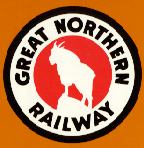 |
EasyDcc by CVP is used on the Great Northern Railway
Click on
any image to enlarge. |
|
|
|
The Command Station is mounted below the loco service depot.
The red displays are the two Ramp Meter and show the track voltage, the current from the booster and the signal activity on the bus. There is one for each power district.The other meters show the current and voltage for the Auxiliary power supply that runs the building and yard lights and other accessories. |



|
These photos show some of the throttles used on the layout.
Next to it is the T5000 - the first of the throttles with a display.
Below that is the OPS throttle and it uses a cell phone battery.
Next to it is the NEW T2300, it operates exactly the same as the T1300 but also has a display.
All the throttles operate the same and are used for mainline and switching duties on the layout. |
|
The layout has three Power Boosters. The dual Zone Master has two boosters and supplies the the two power districts with 3.5 amps each I have a total of 46 locos on the layout at any time so this rating is plenty. One 4 amp Booster is used for the turnouts controlled by accessory decoders.
|
|
There are two Throttle Buss Extenders used on the layout and were installed before the radio throttles were available. All these bits and the transformers are out of the way under the loco depot. |
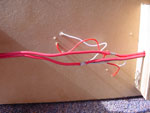 |
Wiring for DCC is a lot easier than for the "old DC" - just two wires - one for each rail.
I use a 12 swg wire pair which runs right around the layout , under the
main line. Every piece of rail is attached. The dropper wires are kept
short and are soldered to the main cable as shown in the photo. I use
2 boosters - one for the upper district and one for the lower district.
The layout was extensively tested as each section of track was wired.
The whole layout was operated for a few months to test the wiring and
the track work before any scenery was started. |
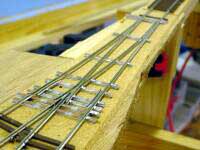 |
I am a very lazy modeller - if I put a loco on the track I do not want to touch to make it move - neither do I like power shut downs if someone goes too far across a turnout set the wrong way. To achieve all this I use dead frogs (sorry Kermit) on all my turnouts. The frog is kept very short (in length) so no power switching is required - less wiring - less trouble. Any loco produced in the past 15 years has good pickup or can easily have extra pickups
added. The point blades are permanently connected to the stock rail - so again no problems. |
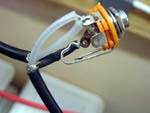 |
The Control Buss uses a good quality co-axial cable soldered as shown. These are located at various
points around the layout. Anyone starting a layout now would be advised to use the radios - these were not available when I started building the layout.
There is only one thethered throttle used on the layout the rest of the control is by Radio Throttles ( 3 x T5000; 2 x T1300; 1 x T2300 and 1 x old RF1300) and Smartphones for those that bring them. |
 |
This is one of the turnout controls - just a simple push button. the 2 leds are wired in series with the turnout motor to show the direction of the turnout. This is all done through an accessory decoder (CVP AD4) so the turnout can
be controlled from any throttle or the computer. |
|
|
|
PROGRAMMING DECODERS |
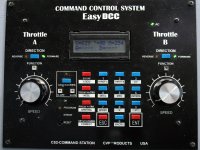 |
This is now a very easy task. The program track is at the end of the lead track (head shunt, drill track) and can be switched from programming duties to main track duties. This programming is done with a Sprog 3 and a computer using Decoder Pro. I can also "Program on the Mail" from the computer though the Easydcc panel. |
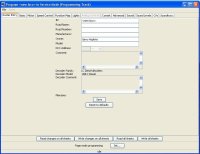 |
I use a programme called Decoder Pro for most of the programming. Decoders are getting so advanced that it is now much easier to use a program that will keep track of all your decoders. The computer just plugs straight into the Sprog 3 and the Command Station and you are in business straight away. |
 |
Decoder Pro can be run on any computer - Windows, Linux, Mac and there is an email group for support. There are two big benefits with the programme - first , its free - second, it is updated every month. |
|
|
|
|
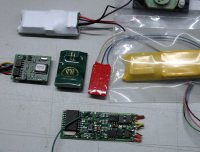 |
There are many decoders to choose from - some of them have up to 2000 CVs to program. |








